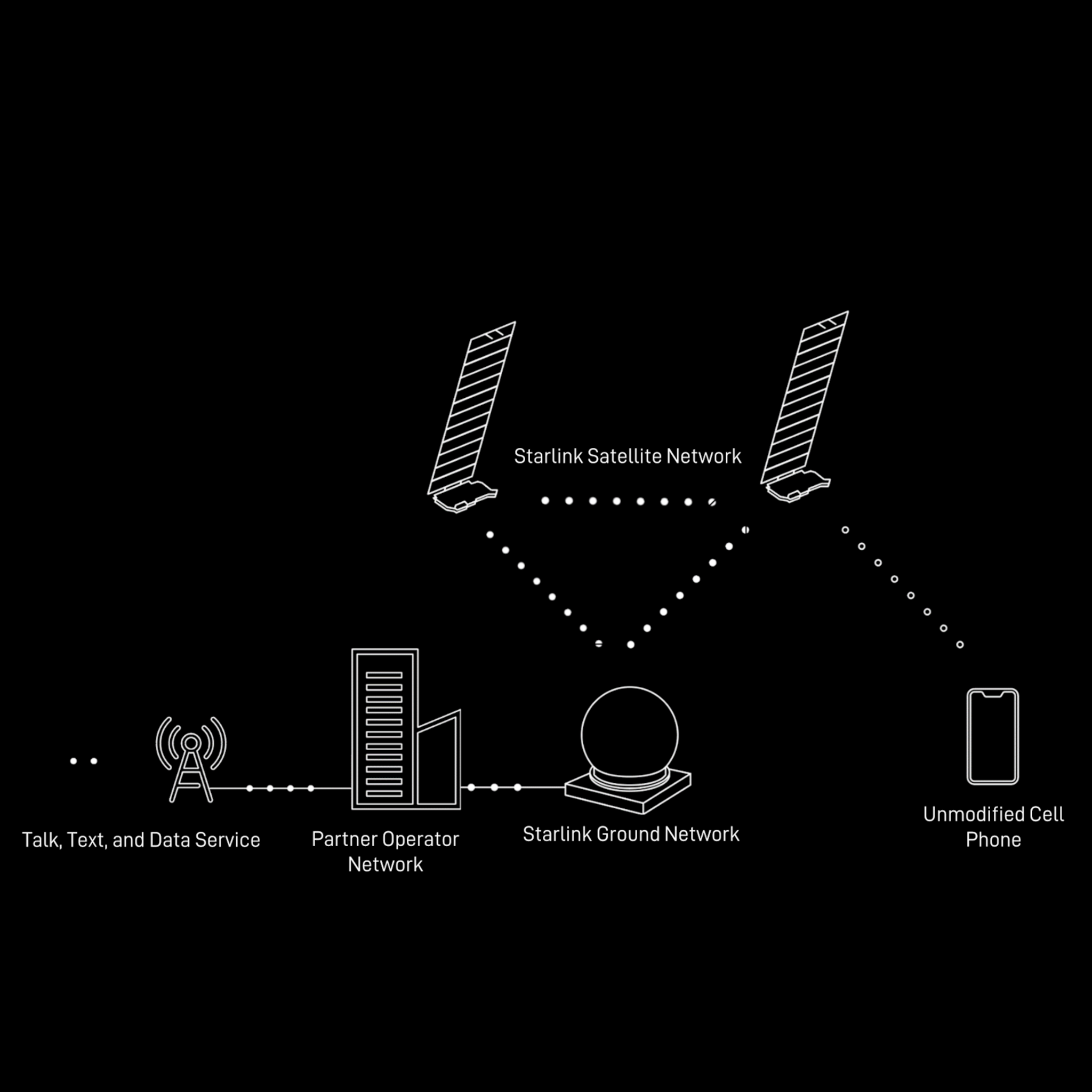
Starlink has demonstrated a video call directly to a mobile phone, which the SpaceX company said was stock standard. The video quality for the call is noticeably inferior to that of a terrestrial connection with the data speed not mentioned, but the publicly announced demonstration suggests Starlink's cellular transmission technology works.
Locally, One NZ intends to launch cellular text and MMS service over Starlink this year with Optus in Australia also intending to provide service for mobile phone users via the low Earth orbit (LEO) satellites that circle the globe in constellations at around 550 km from the ground.
Incredible. Can’t wait to go live later this year for @onenzofficial customers with @SpaceX. The future is coming fast! https://t.co/PrRAtT4BTQ
— Jason Paris (@JasonCParis) May 21, 2024
Voice and data are set to arrive for Starlink direct to cellular in 2025.
Telcos are looking to LEO satellite providers to improve mobile service coverage in difficult to reach areas. 2degrees and Spark announced trials with Lynk Global in June 2023, with a possible regular service launch sometime this year.
As of March this year, Starlink has six new satellites in space with direct to cellular capabilities. How well the 4G LTE service offering will perform remains to be seen, but SpaceX owner Elon Musk said on social media that tests with satellites in a lower than normal orbit provided 17 megabits/s speed to an unmodified Samsung phone, with around 15% packet loss.
Performance for the commercially launched service is likely to be lower than that, with Musk saying interference from terrestrial 4G networks can affect the Starlink signal (T-Mobile in the US uses frequencies in the 1910-1995 MHz bands), and the commercial service will be delivered from a higher orbit, leading to greater latency or transmission delay.
The cost for sending and receiving texts via Starlink has not been set by One NZ, with a spokesperson saying the charges will be finalised closer to the launch date. That a number of telcos worldwide have signed up for space-based cellular service point to Starlink being able to sell it to them at a price point that should result in somewhat consumer-friendly charges, like it has done with its existing broadband access.
Compared to Musk's current business endeavours such as social media company Twitter (now renamed X) and electric vehicle maker Tesla's rocky ride recently, SpaceX's Starlink appears to be marching steadily towards profitability despite its mass-market pricing. Revenue for Starlink is estimated at US$6.6 billion and earnings before tax stand at US$600 million this year, satellite sector analysts Quilty Space said.
Quilty Space Starlink Webinar from Jenna Breedlove on Vimeo.
The satellite broadband provider is thought to have around 2.7 million subscribers currently. Its service offerings have also been widened lately; Starlink in New Zealand is targeting residential customers with a $159 a month standard service plan, and a $79 per month deprioritised plan on which users will experience slower speeds during peak hours.
Kiwi customers can also opt for the roam mobile plan with unlimited data, or boats which also has no caps for inland use, and 50 gigabyte, 1 TB and 5 TB limits while on the ocean, with the top seafaring plan costing $8250 a month.
For the residential and roam plans Starlink recommends the $599 Dishy satellite terminal, whereas for boats the company suggests the $4567 flat high performance hardware.
Business users can subscribe to fixed Starlink offerings starting at 40 GB for $196 a month, going to $2507 per month for 6 TB; the caps are for priority data, and there are no limits to data use. There are also inland mobile service options, along with maritime and aviation ones.

We welcome your comments below. If you are not already registered, please register to comment.
Remember we welcome robust, respectful and insightful debate. We don't welcome abusive or defamatory comments and will de-register those repeatedly making such comments. Our current comment policy is here.